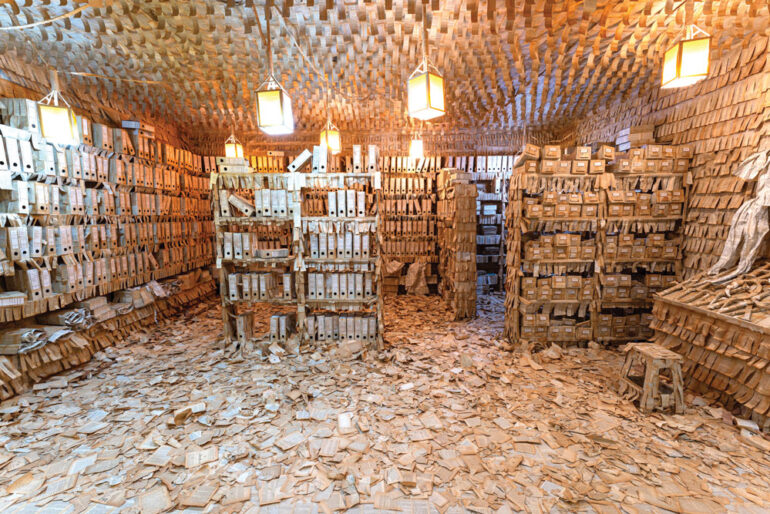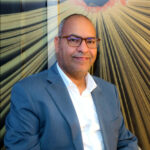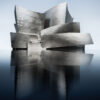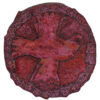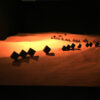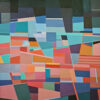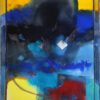Sharjah Calligraphy Biennial continues its huge journey by hosting the 10th edition (Elevation). This year’s edition was full of solo exhibitions and collective exhibitions of artists of different geographies and cultural backgrounds that extend all throughout the world, east and west, of those who were inspired by the dynamic and vibrant nature of calligraphy and all its adjacent arts, with their rich and amazing concepts, visions, and visual solutions, which led to creating multiple visual contexts varying between authenticity and contemporary. The technical practices varied widely according to the ideas and philosophical views of each of the selected artists to exhibit in the most remarkable event in the region for its category, this event that is also considered a major destination for all those who work in calligraphy and its arts in the whole wide world.
This biennial introduces, in every edition, dozens of local and international remarkable exhibitions, which occupy a huge display area in Sharjah emirate and its cities in the eastern and central areas, such as Sharjah Calligraphy Area, Sharjah Calligraphy Museum, House of Wisdom, Emirates Fine Arts Society, Calligrapher’s Studios, Ceramics House, Sharjah Centre for the Art of Arabic Calligraphy and Ornamentation, Al Qasimia University, Fine Arts and Design College at Sharjah University, in addition to many others. In that sense, I feel it is worth exploring the most significant and exclusive proposals this biennale introduces under the category (International Exhibitions), as they are the exhibitions chosen to manifest and signify the concept of the new edition of the biennale (Elevation). Those exhibitions have a true apparent uniqueness in the way they reflect each artist’s capabilities and vision while simultaneously providing many opportunities to keep up with the latest updates on the front of the contemporary art movement that takes inspiration from the shapes and energies of letters, ornamentation, and embroidery, and all that follow it of parallel and intercrossed arts branches in the world.
The sound and light, in addition to the movement, were all present in many of the international exhibitions at the Biennale, in addition to installed artworks in various contexts, and so did artworks and linear metal sculptures that managed to shake the traditional framework of paintings, thus creating the right space and unusual dimensions. There was also a noticeable presence of papers, fabrics, wood, and artificial materials such as acrylic and plastic. The artworks overall came in varied display methods and styles, each according to their essence and nature.
In his piece “The Scribeʼs Archive”, Argentinean artist Pablo Lehmann managed to control the space and area of display starting at the ground, to the walls, up to the highest ceiling of the place, while dominating the internal space of the display area or the scriberʼs room, as he calls it. he worked on furnishing it and filling it with storage units and shelves covered with papers, same as the walls, ceilings, and floor. Papers occupied all surfaces and were scattered all over the display area; piled on the floor, swinging from the ceiling, and all over the boxes, files, and shelves units. Papers also covered some English letters models, benches, and wraps. In addition to lighting units hanging from the top which were able to fill the space with revealing lighting.
This artwork that utilizes this rallying assembly of paper initially came to correspond to the energies of the word and sublimate its existence as the basis of all texts on the papers, and the true provider of the optical images. the texts have created an image for each piece of paper, and the artist hung them up and scattered them following his own vision, in an effort to emphasize the visual unity, and its real ability to enrich the scene and add amazement to the articulate archival piece, which acknowledges the importance of the written human trace that transmits the history of the word, from deep within the closed books, to the outside to dominate the open visual space and evaluate its visual presence that captivates the seeing eye and the thinking mind.
There is no doubt that you, too, would find your inner self and being within this amazing visual archive, and in the words and texts, you’ll find your lost cause and hope. Within this space, you can find the words, and you can find the pouring texts scripted within the papers, and the flattened bodies radiating with the letter’s light, which they all tell you, in one way or another, that you exist within this human archive, which gives us a futuristic image of the world and the life that is full of all that exists while everything here now in covered with words and papers, and if it were invisible to us, in the current lived reality, we are certain to meet it at the end of the road, at infinity and eternity.
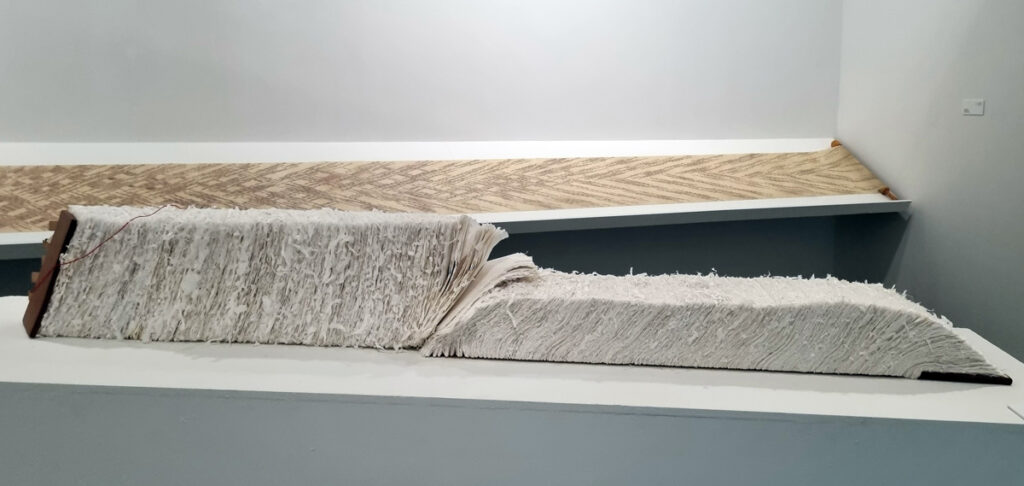
Perhaps this articulate Argentinean artwork in front of which we stand carries optical and philosophical energies and ideas that stimulate the production of equivalent reactions and insights, so much that we are unable to imagine the load of archives each of us has to find within, when one stands at some angle – a different one or one dictated by a desire or dominant extinct – of display angles among its coherent components.
The artworks of the American, Lebanese origin, artist Zeinab Saab also rely on paper as the main material to create the image and finish the visual artwork. In her artwork “Be”, the artist worked between two starts or two ends, or as you might say, between a start and an end. The artist shaped her piece like a materialist-looking book that moves between front and back covers. This book exists as it moves from the vertical position until the pages fall to balance at a horizontal position, and you have the right to choose where the book starts and where it ends. The front of the book could be its back and vice versa, you are entitled to what you want, see, or desire. The artist in this artwork, contrary to the Scriber’s Archive mentioned before, gives the shape of the book by a pile of assembled papers, which in sum and in all has a shape closer to being a sculptural configuration made out of paper, in which the pages keep on flipping without having the chance to actually read the texts on any piece of book pages, as if we are in the presence of a book that could be every book, and it could also be a book for each one of us, according to the perceptions and the desire that attracts us to it, and pushes us towards it.
As if she wanted to find the artistic equivalent of the text hidden inside her book “Be” and the declared apparent texts all over her two manuscripts she named “What Was Gained?” and “Hope You Make It” in which the texts have lined up and intercrossed in geometric paths, while maintaining for itself, along with the repetition system derived from Islamic ornamentation, its own diversity and noncompliance entirely to the chain of repetition and redundancy, especially in what we can see and follow in “What Was Gained?” manuscript that has rich artistic varieties in contrast to the state of symmetry present in the other manuscript.
And here with the wraps around the wooden arms for each manuscript that is spread horizontally alongside the hall walls with each of the manuscripts in its display area. We could also observe the artist’s ability not to presume a beginning or an end to the text movement, nor an opening or a conclusion, just like in her artwork “Be” where the ending and the beginning are constantly changing from one viewer to another and from one engager with the art piece to another.
In this context proposed by Zeinab Saab, she moves with her book that is both closed and open to be received, so to speak, to her two manuscripts that contain vivid statements with motivating connotations and general or singular interpretations. She is rather moving us down the way where each one of us could have his own book, his own manuscript, or his own recurring statement that connects the beginning to an ending that, in turn, could be the new beginning to an ever-renewed ending.
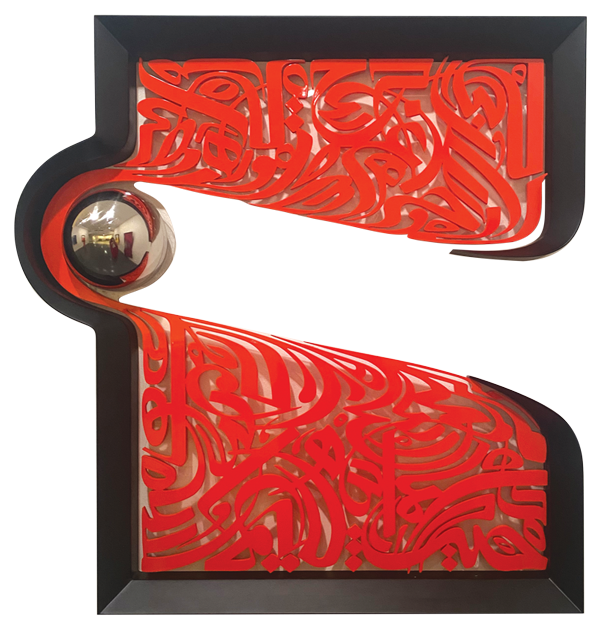
While Colombian artist Miriam Londono is creating her own conceptual project “Times of Silence”, while wrapping herself with paper and with the energy of the word. The artist has managed to braid the words made out of paper clay, then hang them together in her installation art piece that consists of two hundred long sentences, hand-written, in a hung and assumed book with no pages. It narrates, using the voice of Colombian women, many stories of a place at war. In this artwork, the paper defers its typical role as a plane holding the text so that its formed clays become the text themselves. The texts were hung from the top of the display area, in a way we can read the sentences pouring from above as the viewer likes and desires, without a beginning or an ending, where every sentence carries its own place and value among the other sentences in a text that carries visual and audial variation, and stays wide open to all possibilities of receiving and responding.
Meanwhile, Polish artist Aleksandra Toborowicz proposes her visual artwork in video format under the name “Kaleidoscopes” or mirrors tube, in which she utilizes the recurrence of Arabic and Latin alphabet letters to constitute, with each move, an artistic alphabetical configuration embroidered with infinite ornamental shapes.
This technical artwork is in nature approaching the worlds of graphic design, which is built on proposing a set of solutions related to the values of recurrence, diversity, rhythm, beats, and melodies, which enrich the vision and adds layers of aesthetics and accomplishes amazement, as much as hoped.
The mutual artwork, titled “Inner Awakening”, between the Argentinean artists Franco Mende, Fernando Ramos, and Yubran Gosn approaches the technical visual proposal of the Polish Kaleidoscopes mentioned previously. But it remains to be a visual film material that seeks to capture the singing sounds made by the El Coyuyo insect, which echoes to reflect the dialogue between cultures and forms, through the traditional fabric of the La Randa so that the voice will turn into a melting or fused thread in a texture that supports the protection of human identity.


The artworks of the Canadian artist of Iranian origin “Sasan Nasernia” set the stage for their sculptural metallic presence with its clear colors in order to reach the meaning of Metamorphosis and express it. where the words leave their area of assumed existence, crossing the borders of the frame, as if it was self-moving or prompted by an internal force that transfers them from a state of stillness to a destination where they could be observed in their new shape and unusual appearance. they flow outside the frame and crawl towards the wall, we might even see them reaching the floors of the display hall, or perhaps pouring from the top of the frame, entangled together to configure, within the frame, their overlapping alphabetical texts in an artistic pattern more adjusted than the pieces shattered on the outside.
We might even see them fusing and melting with the frame, or watch them moving in between two frames which are located on perpendicular walls, and the attracting area between the texts and words inside the frames is more like stretched rubber. there is no doubt that these artworks that combine the regulated patterns with the deliberate liberated rebelling against that pattern have utilized digital technology and metallic paint techniques, then the process of understanding the core of the design digitally is possible to start producing it inside workshops and developed factories using laser technologies and modern metallic paint ovens. only then, any mistake in production stays with low odds, lower than any other way, so that all the pieces come together in a well-crafted impressive shape.
While Lebanese artist Hussein Alazaat introduced a collection of artworks he named “Letter Orbit” and he chose 5 letters of the Arabic alphabet to act as his visual materials; Alef, Baa, Geem, Dal, and Haa, which he used to weave a set of orbits that are signifying and charged with emotion, familiarity, and longing to the home and residence, and fusion in the orbit of swirling and home, and the loving of the Haa whose eyes have serenity in their abstinence.
Also, in his serious research task, The Russian Artist Pokras Lampas expressed the General Modern Calligraphy & Scripts. According to the artist’s perspective, he relied on the Biennale title “Elevation” to express the transformation of the different cultures which integrate calligraphy into artistic non-typical contexts which inspired the ancient forms of letters in the contemporary artistic development, which will then have the ability to cross times, towards the future, and carry on with the elevation mission.
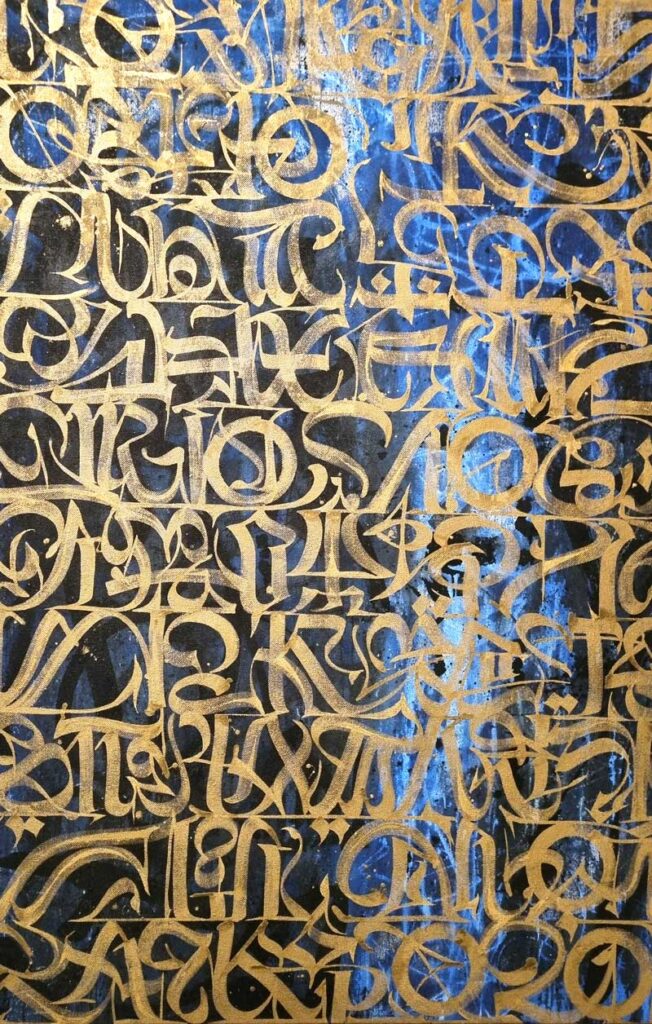

Poet, novelist, visual art researcher, received a master's degree in art history from Cairo Academy of Fine Arts in 2008, and a bachelor's degree in expressive arts from the Decorative Department of the Minya Academy of Fine Arts in 1996.
He also chaired the International Intellectual Seminars Committee for the Sharjah Calligraphy Forum, the Islamic Arts Festival, and the Sharjah Prize for Fine Critical Research at the Arts Department in the Department of Culture and Information in Sharjah until 2012.

